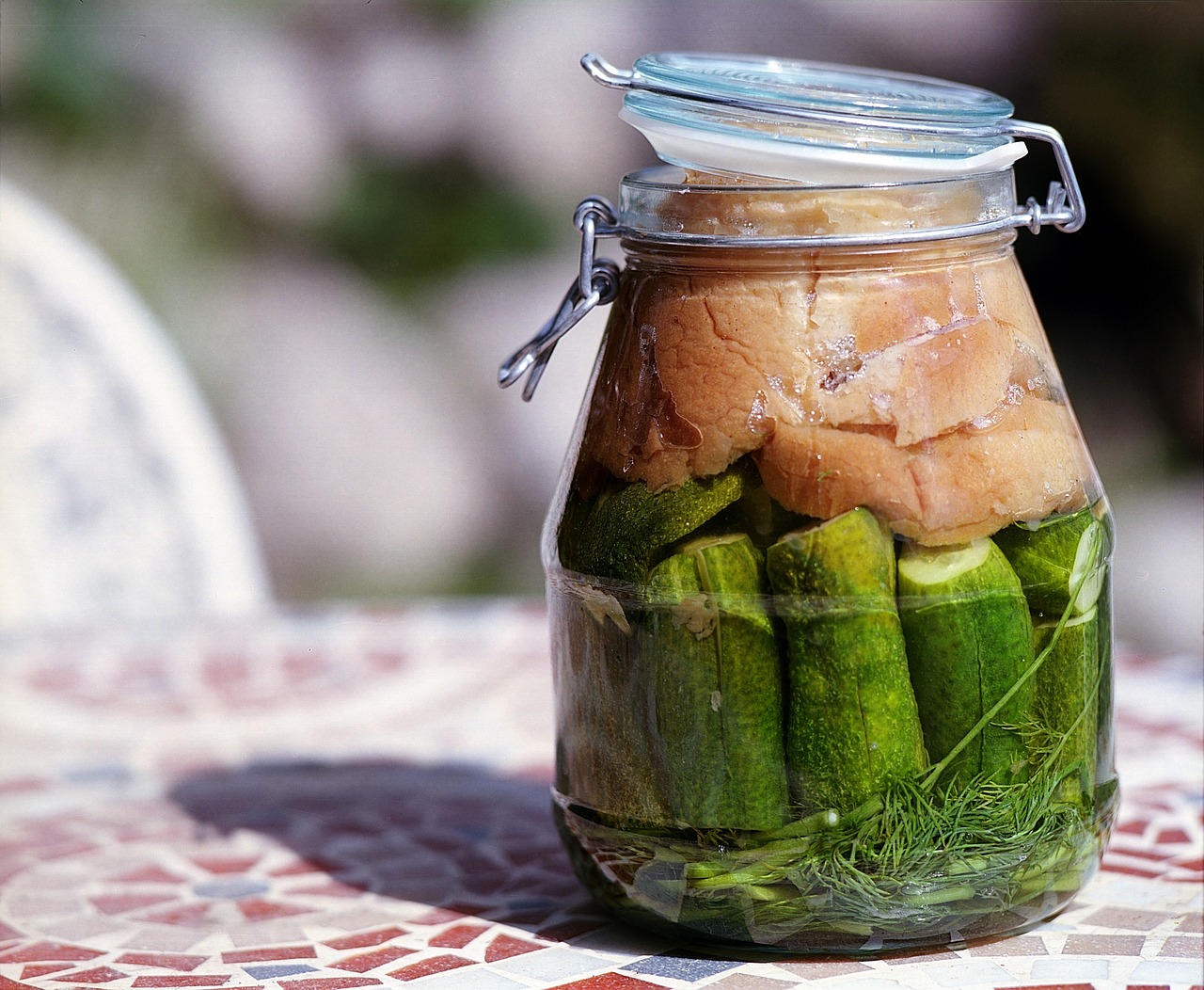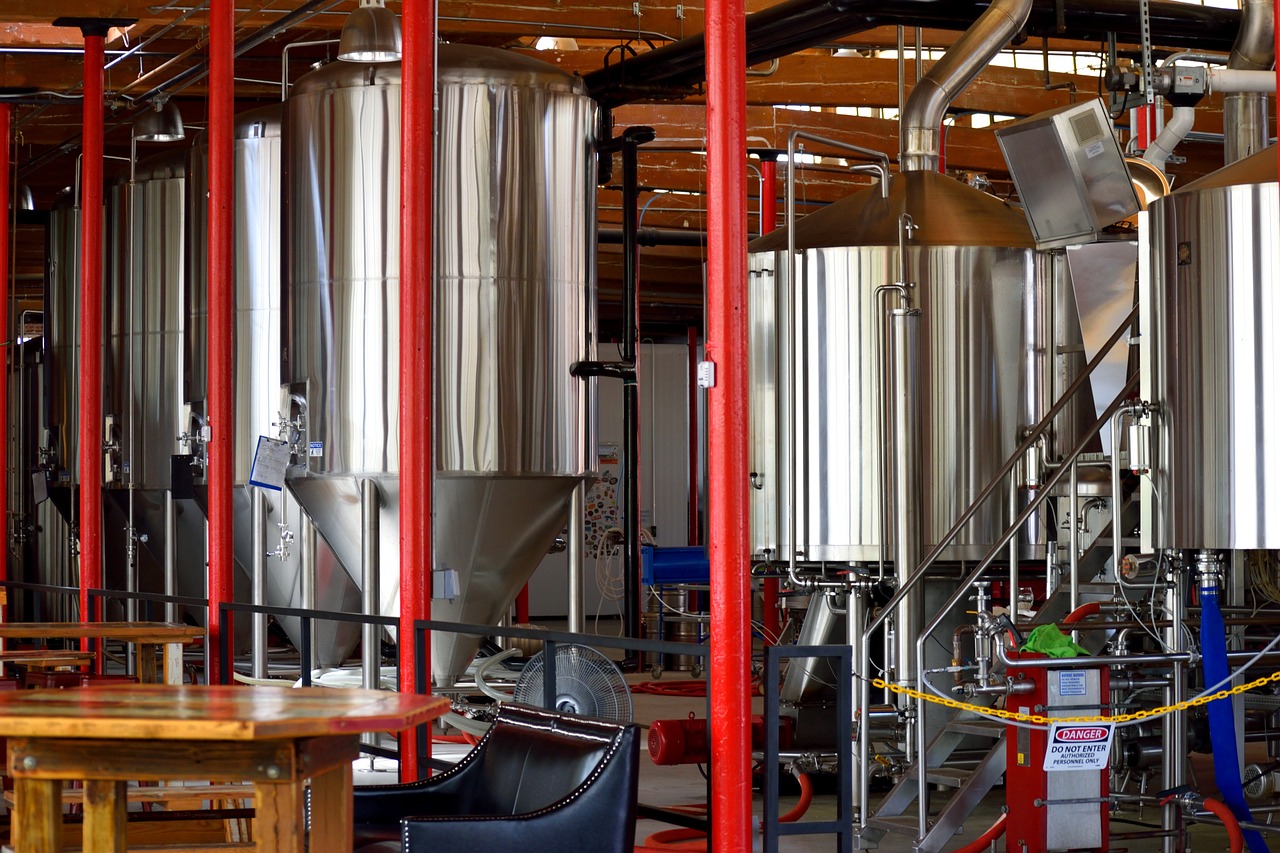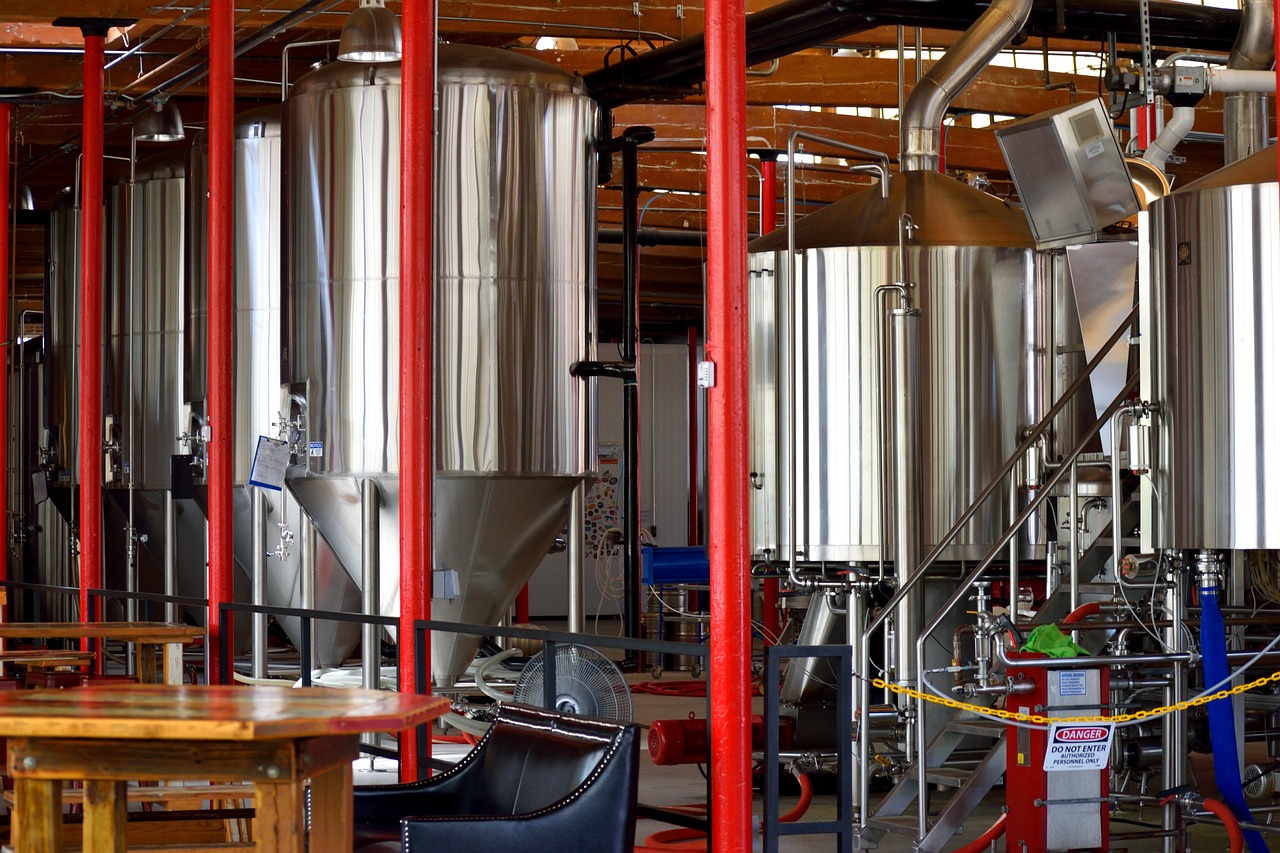Indulge in the tangy and invigorating flavors of Homemade Kimchi, a powerful fermented vegetable dish that not only delights your taste buds but also nourishes your body. As part of Tastepan’s commitment to providing nutritious and delicious recipes, this article will guide you through the process of creating your very own batch of Kimchi. From the crisp cabbage to the vibrant array of spices, experience the transformative benefits of fermentation as you prioritize your well-being and savor the irresistible flavors. Let’s embark on a culinary adventure that seamlessly combines taste and health, making healthy eating an enjoyable and effortless endeavor.

The Health Benefits of Fermented Vegetables
Improved digestion
One of the key benefits of consuming fermented vegetables, such as kimchi, is improved digestion. The fermentation process breaks down the complex carbohydrates found in vegetables, making them easier for your body to digest. This can help alleviate symptoms of indigestion, bloating, and constipation. By incorporating fermented vegetables like kimchi into your diet, you can support a healthier digestive system.
Boosted immune system
Fermented vegetables are known for their ability to boost the immune system. This is because the fermentation process increases the presence of beneficial bacteria, or probiotics, in the vegetables. These probiotics help to strengthen the immune system by promoting a healthy balance of bacteria in the gut. By consuming kimchi regularly, you can give your immune system a natural and delicious boost.
Enhanced nutrient absorption
Another advantage of fermented vegetables is enhanced nutrient absorption. During the fermentation process, the beneficial bacteria in kimchi produce enzymes that break down the nutrients in the vegetables, making them more bioavailable for your body to absorb. As a result, consuming kimchi alongside other nutritious foods can help you maximize the nutritional benefits of your meals.
Reduced inflammation
Inflammation is a common underlying factor in many health conditions, including chronic diseases. Fermented vegetables like kimchi have been found to have anti-inflammatory properties. The probiotics and antioxidants present in kimchi help to reduce inflammation in the body, which may help alleviate symptoms and support overall health. By incorporating kimchi into your diet, you can potentially reduce inflammation and promote a healthier, more balanced body.
Understanding Kimchi
History of kimchi
Kimchi has a rich history that dates back thousands of years in Korea. It was originally developed as a method to preserve vegetables during the winter months when fresh produce was scarce. Over time, kimchi evolved to become a staple in Korean cuisine and is now enjoyed worldwide. Its long history and cultural significance make kimchi a truly special and unique dish.
Ingredients used in kimchi
The ingredients used in kimchi vary depending on the recipe and personal preference. However, there are some common components that can be found in most kimchi recipes. The main ingredient is typically napa cabbage, which is fermented with a mixture of garlic, ginger, red chili pepper flakes, salt, and sometimes fish sauce or shrimp paste. These ingredients work together to create the distinct and vibrant flavors of kimchi.
Variations of kimchi
While the traditional napa cabbage kimchi is the most well-known variation, there are actually many different types of kimchi. Some popular variations include radish kimchi (kkakdugi), cucumber kimchi (oi sobagi), and water kimchi (mul kimchi). Each variation has its own unique taste and texture, but they all share the common thread of being fermented vegetables that are bursting with flavor.
Cultural significance of kimchi
Kimchi holds deep cultural significance in Korean society. It is not just a dish, but a symbol of Korean identity and heritage. In fact, kimchi-making is often a communal activity that brings families and communities together. Kimchi is also a staple food in Korean households, with many Koreans consuming it daily. Its cultural significance and widespread popularity make kimchi a beloved and cherished part of Korean culture.

The Fermentation Process
What is fermentation?
Fermentation is a natural metabolic process that converts carbohydrates into alcohol or organic acids using microorganisms like bacteria or yeast. In the case of kimchi, lactic acid bacteria play a key role in the fermentation process. These bacteria convert the sugars in the vegetables into lactic acid, which gives kimchi its signature tangy flavor. Fermentation not only adds unique flavors to foods but also preserves them, making them last longer and enhancing their nutritional value.
How fermentation preserves and enhances food
One of the primary benefits of fermentation is its ability to preserve food. The lactic acid produced during fermentation creates an acidic environment that inhibits the growth of harmful bacteria, fungi, and other microorganisms. This preservation process helps to extend the shelf life of the vegetables and maintains their nutritional value. Additionally, fermentation can enhance the flavor and texture of foods, making them more enjoyable to eat.
Fermentation steps for making kimchi
The process of making kimchi involves several key fermentation steps. First, the cabbage is soaked in a brine solution to draw out any excess water. Next, a paste made from garlic, ginger, red chili pepper flakes, salt, and other seasonings is prepared. The leaves of the cabbage are then individually coated with the paste before being tightly packed into a container. The container is then left at room temperature for several days to allow the fermentation process to take place. During this time, the flavors develop, and the beneficial bacteria multiply. Once the desired level of fermentation is reached, the kimchi can be refrigerated and enjoyed for weeks or even months.
Nutritional Value of Kimchi
Vitamins and minerals in kimchi
Kimchi is packed with vitamins and minerals, making it a valuable addition to a healthy diet. Napa cabbage, the main ingredient in kimchi, is rich in vitamins A, C, and K, as well as minerals like calcium, potassium, and iron. Other ingredients like garlic and ginger also contribute additional nutrients. By incorporating kimchi into your meals, you can increase your intake of essential vitamins and minerals, supporting overall health and wellbeing.
Probiotics in kimchi
One of the most notable nutritional benefits of kimchi is its abundance of probiotics. The fermentation process of kimchi encourages the growth of beneficial bacteria, such as Lactobacillus and Bifidobacterium. These probiotics have been linked to various health benefits, including improved digestion, strengthened immune system, and enhanced nutrient absorption. By consuming kimchi regularly, you can introduce these beneficial bacteria into your gut and support a healthy balance of microorganisms.
Antioxidants in kimchi
Kimchi also contains a range of antioxidants, which are compounds that help protect the body against damage caused by harmful free radicals. The red chili pepper flakes used in kimchi contain capsaicin, a powerful antioxidant known for its anti-inflammatory properties. Garlic, another key ingredient, is rich in compounds like allicin, which have been shown to have antioxidant effects. By enjoying kimchi, you can benefit from the antioxidant power of its ingredients and support your body’s defense against oxidative stress.

Kimchi and Gut Health
Importance of a healthy gut
Maintaining a healthy gut is essential for overall health and wellbeing. The gut is home to trillions of bacteria, collectively known as the gut microbiota, which play a crucial role in digestion, nutrient absorption, immune function, and even mental health. A healthy gut microbiota is characterized by a diverse and balanced population of bacteria. Imbalances or disruptions in the gut microbiota have been linked to various health issues, including digestive disorders, weakened immune system, and even mood disorders. Therefore, it is crucial to support a healthy gut through proper nutrition and lifestyle choices.
Role of kimchi in gut health
Kimchi can play a significant role in supporting a healthy gut. The probiotics present in kimchi help to replenish and diversify the beneficial bacteria in the gut. This, in turn, promotes a healthy balance of microorganisms and supports optimal gut function. The fiber content of kimchi also acts as a prebiotic, providing nourishment for the beneficial bacteria in the gut. By incorporating kimchi into your diet, you can help support the health and diversity of your gut microbiota.
Effects of kimchi on gut microbiota
Studies have shown that consuming kimchi can positively impact gut microbiota composition. The probiotics in kimchi, such as Lactobacillus and Bifidobacterium, can colonize in the gut and contribute to a more diverse microbiota. Increased diversity of gut bacteria has been associated with improved digestion, better nutrient absorption, and a stronger immune system. Therefore, regularly consuming kimchi can have a positive effect on the balance and diversity of your gut microbiota, potentially leading to improved gut health.
Kimchi as a Probiotic
Definition and benefits of probiotics
Probiotics are live microorganisms that provide health benefits when consumed in adequate amounts. They are often referred to as “good bacteria” and are crucial for maintaining a healthy balance in the gut microbiota. Probiotics have been associated with a range of benefits, including improved digestion, enhanced immune function, and reduced inflammation. By incorporating probiotics into your diet, either through natural food sources or supplements, you can support your overall health and wellbeing.
Kimchi as a natural probiotic source
Kimchi is an excellent natural source of probiotics. The fermentation process of kimchi encourages the growth of beneficial bacteria, such as Lactobacillus and Bifidobacterium, which act as probiotics in the gut. These probiotics can survive the journey through the digestive tract and help to improve the balance of bacteria in the gut. By enjoying kimchi regularly, you can introduce these probiotics into your gut and support a healthy gut microbiota.
Probiotic strains found in kimchi
Kimchi contains several probiotic strains, each with its unique benefits. Some of the most commonly found probiotic strains in kimchi include Lactobacillus kimchii, Lactobacillus brevis, and Leuconostoc mesenteroides. These strains have been shown to have antimicrobial, immune-boosting, and anti-inflammatory properties. By consuming kimchi, you can introduce these probiotic strains into your gut and support a healthier microbial balance.
How to Make Homemade Kimchi
Choosing the right ingredients
When making homemade kimchi, it’s essential to choose fresh and high-quality ingredients. Start with a firm and fresh napa cabbage, as it forms the base of the kimchi. Other key ingredients include garlic, ginger, red chili pepper flakes, and fish sauce or shrimp paste for added umami flavor. Make sure to select organic or locally sourced ingredients whenever possible to ensure the highest quality and nutritional value.
Preparation and fermentation steps
The process of making homemade kimchi involves several steps. Firstly, the napa cabbage is thoroughly washed and then cut into manageable pieces. The cabbage is then soaked in a brine solution for several hours to draw out excess water and to soften the leaves. While the cabbage is soaking, the paste, consisting of minced garlic, grated ginger, red chili pepper flakes, and other seasonings, is prepared. After the cabbage has soaked, each leaf is individually coated with the paste. The leaves are then tightly packed into a jar or fermentation container and left at room temperature for a few days to ferment. During this time, the flavors develop, and the cabbage becomes tangy and delicious. Once the desired level of fermentation is achieved, the kimchi can be refrigerated and enjoyed over a period of weeks or even months.
Tips and tricks for successful homemade kimchi
Making homemade kimchi can be a rewarding experience, but there are a few tips and tricks to keep in mind for successful results. Firstly, ensure that all equipment and utensils are clean and free from contaminants to avoid any unwanted bacteria growth during fermentation. Adjust the amount of red chili pepper flakes according to your preferred level of spiciness. The longer you ferment the kimchi, the tangier and more complex the flavors will become. Finally, don’t be afraid to experiment with different vegetables and seasonings to create your own unique kimchi recipe. Have fun and enjoy the process of making homemade kimchi!
Storing and Serving Kimchi
Proper storage techniques
Proper storage is crucial for maintaining the quality and flavor of kimchi. Once the desired level of fermentation is reached, the kimchi should be transferred to an airtight container and stored in the refrigerator. Cold temperatures help to slow down the fermentation process and preserve the flavors of the kimchi. It is important to check the container occasionally for any gas buildup and release any excess gas to avoid pressure buildup. When stored correctly, kimchi can last for several weeks or even months in the refrigerator.
Recommended serving sizes
The recommended serving size of kimchi can vary depending on individual preferences and dietary needs. As kimchi can be quite spicy, it is generally served as a side dish in small portions. A serving size of kimchi is typically around 1/4 to 1/2 cup. However, feel free to adjust the serving size to suit your taste and include it in your meals as desired. Remember that kimchi is a flavorful and pungent condiment, so a little goes a long way in enhancing the taste of your dish.
Kimchi recipes and serving ideas
Kimchi is a versatile ingredient that can be enjoyed in a variety of ways. Beyond being served as a side dish, kimchi can be used in various recipes to add a unique and flavorful twist. Try adding kimchi to stir-fries, fried rice, or even omelets for an extra kick of flavor. Kimchi also pairs well with proteins like tofu, chicken, or pork. For a quick and easy snack, wrap a piece of kimchi in a lettuce leaf and enjoy it as a refreshing and spicy bite. The possibilities are endless when it comes to incorporating kimchi into your meals, so get creative and experiment with different recipes and serving ideas.
Kimchi in Traditional and Modern Cuisine
Kimchi in Korean cuisine
In Korean cuisine, kimchi is an integral component of many traditional dishes. It is typically served as a side dish, or banchan, alongside rice and other main dishes. The vibrant flavors and crunchy texture of kimchi complement and enhance the overall dining experience. Some popular Korean dishes featuring kimchi include kimchi jjigae (kimchi stew), kimchi bokkeumbap (kimchi fried rice), and kimchi jeon (kimchi pancake). Kimchi’s versatility and unique taste make it a staple ingredient in Korean cuisine.
Global popularity of kimchi
In recent years, kimchi has gained widespread popularity around the world. Its bold flavors, rich cultural history, and health benefits have made it a sought-after food. Kimchi can now be found in grocery stores and restaurants outside of Korea, catering to the growing demand for this beloved condiment. The global popularity of kimchi speaks to its ability to transcend cultural boundaries and become a favorite among food lovers worldwide.
Kimchi fusion dishes and innovative recipes
As kimchi continues to capture the hearts and taste buds of food enthusiasts, innovative chefs and home cooks have started experimenting with kimchi in fusion dishes. Kimchi tacos, kimchi grilled cheese sandwiches, and kimchi pizza are just a few examples of the creative ways kimchi has been incorporated into modern cuisine. These fusion dishes combine the traditional flavors of kimchi with other culinary influences, resulting in exciting and unique flavor combinations. Exploring kimchi fusion dishes can be a fun and delicious way to experience this versatile ingredient.
Incorporating Kimchi into Your Diet
Potential health risks and precautions
While kimchi offers a range of health benefits, it is important to be aware of potential risks and precautions. Kimchi is a naturally fermented product, and in rare cases, improper fermentation or contamination can occur, leading to foodborne illnesses. To minimize the risks, it is crucial to follow proper food safety practices, such as using clean equipment and storage containers, ensuring correct fermentation conditions, and consuming kimchi within the recommended time frame. If you have any underlying health conditions or allergies, it is advisable to consult a healthcare professional before incorporating kimchi into your diet.
Adding kimchi to meals and snacks
Incorporating kimchi into your meals and snacks is a simple and delicious way to enjoy its unique flavors and health benefits. Start by adding a small serving of kimchi as a side dish to your main meals. Its crunchy texture and tangy taste can complement a wide variety of dishes, from rice and noodles to sandwiches and wraps. You can also chop or slice kimchi and add it to salads, soups, or grain bowls for an extra burst of flavor. For a quick and satisfying snack, enjoy a few bites of kimchi on its own or wrap it in lettuce for a refreshing bite.
Creative ways to use kimchi
If you’re feeling adventurous, there are countless creative ways to use kimchi in your culinary adventures. Use kimchi to add depth and complexity to traditional recipes by incorporating it into scrambled eggs, quesadillas, or even macaroni and cheese. Kimchi also makes a fantastic topping for pizzas, burgers, or hot dogs, giving them a unique and flavorful twist. You can even blend kimchi into dressings or dips for an added zing. The key is to let your imagination run wild and experiment with different combinations to discover your own favorite ways to use kimchi.
In conclusion, kimchi is not just a side dish; it is a powerhouse of health benefits, bursting with flavors and cultural significance. From improved digestion and a boosted immune system to enhanced nutrient absorption and reduced inflammation, incorporating kimchi into your diet can have a positive impact on your overall health and wellbeing. Whether you’re enjoying traditional Korean cuisine or getting creative with fusion dishes, kimchi offers endless possibilities for delicious and nutritious meals. So why not prioritize your well-being and embark on a kimchi-filled culinary adventure today?

